When to start chunky baby food
Textured Foods: How to Transition Baby from Puree to Table Food
Is your baby refusing to eat food other than purees? Not sure how to introduce textured foods to your baby? Here are some expert tips from a registered dietitian.
Jump to:- When to Move to Textured Foods
- How to Transition to Table Food
- What If your Baby Stops Eating
- Role Model!
- I want to leave you with this:
When to Move to Textured Foods
Generally speaking, most babies are ready to transition from purees to textured foods between 6-9 months.
Is your baby 6 months old and up?
Learn all the secrets to starting solids safely while optimizing nutrition!
I NEED IT NOW!
If you decide to take the baby led weaning approach, then your baby will learn to handle textures from the start.
If you’re starting out with purees, it's best to keep this stage pretty short. That’s because research shows that infants who are introduced to textures by 9 months generally have less feeding problems and greater food acceptance down the road.
Therefore, you need to gently challenge your baby with new food consistencies. Otherwise, they will get used to just swallowing and not learn to move food around in their mouth and chew. All this leads to an increased aversion to textures.
If you haven’t decided which feeding method is right for you and your family, then check out this post - Starting Solids - Purees vs. Baby led weaning.
And remember, babies don’t need teeth to chew! It's amazing what their gums are capable of!
The Benefits:
- Increased acceptance of variety
- Strengthening of baby’s jaw muscles
- Promotes speech development
How to Transition to Table Food
First, if you've started on purees and feel stuck, allow me to guide you!
Every child is different and contrary to what you may have been told, you don’t necessarily have to introduce textured foods in any specific order or stages. Everything you see in the visual is appropriate and safe to serve to your baby.
Everything you see in the visual is appropriate and safe to serve to your baby.
But your baby or you might need the gradual progression. Perhaps your baby has a very sensitive gag reflex or other underlying issues. ALWAYS do what feels best and comfortable for you and your family. Just remember not to stay at any one stage for too long.
You can start by thickening the baby purees to encourage the use of the tongue and muscles in the mouth to start the chewing process. This can be accomplished by adding less water or liquid when pureeing.
If you've been spoon-feeding, try preloading the spoon (here's one that I highly recommend!) and either place on the table or hold it out for them to grab.
Then move onto lumpy to mashed to soft minced and chopped up foods along with soft finger foods. Here are easy ways to incorporate vegetables for babies 6 months and up!
Oatmeals/porridges are a great place to start. Try offering these oatballs. Add finely chopped vegetables or fruits to quinoa cereal.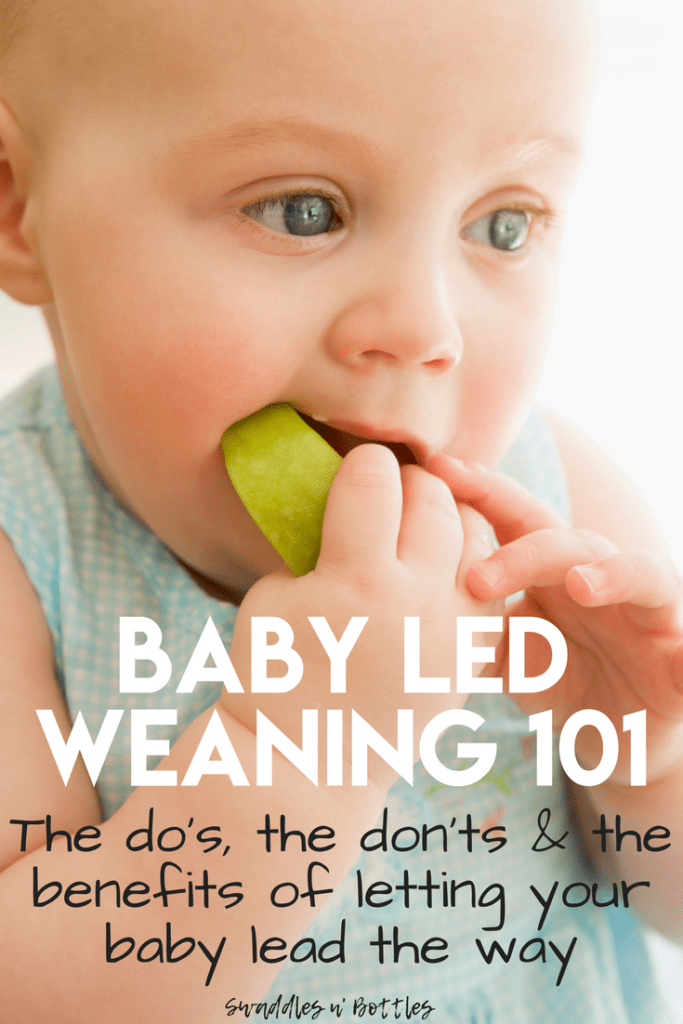
Additionally, don’t think you can’t serve the previous texture once you move on. It’s important to continue exposing them to a wide variety of textures.
Safety Tips
- Always stay close to your baby.
- Make sure your baby is secured tightly in a highchair, sitting upright and not leaning back. Their feet need to be supported as well!
- Be sure to serve age-appropriate food size and texture.
- Avoid foods that are small and round (e.g. grapes, blueberries), hard (raw vegetables, nuts), or sticky (thick nut butter, candy) as they are choking hazards.
Is it going to be messy? Absolutely! As hard as it may be, learn to embrace it as it's SUCH an essential part of the self-feeding journey. In the meanwhile, here are some products that I recommend
What If your Baby Stops Eating
from my IG account: @kidfriendly.mealsBe Patient
It’s normal for your baby to resist texture at first because it’s unfamiliar and feels unsafe. While it's tempting to continue serving just purees, DON'T fall back! Keep marching forward otherwise your baby will never learn.
While it's tempting to continue serving just purees, DON'T fall back! Keep marching forward otherwise your baby will never learn.
Of course you worry when your baby doesn't eat as much as you think they should, but by no means should you rush them or force-feed. You do need to gently and lovingly pressure/challenge them by continuing to offer.
Remember, learning to chew and swallow different textures takes time to master so keep giving them plenty of opportunities to practice in a safe, pleasant, and encouraging eating environment! That’s the best thing you can do!
Again, your baby is most likely not going to consume much, if any, at first. But remember, at this age, exploring all the different textures and advancing their oral motor skills (moving food around the mouth, chewing, etc.) is much more important than the amount of food that actually makes it into the belly.
With continuous exposure and practice, your baby will gain the skills and confidence needed to handle textured foods.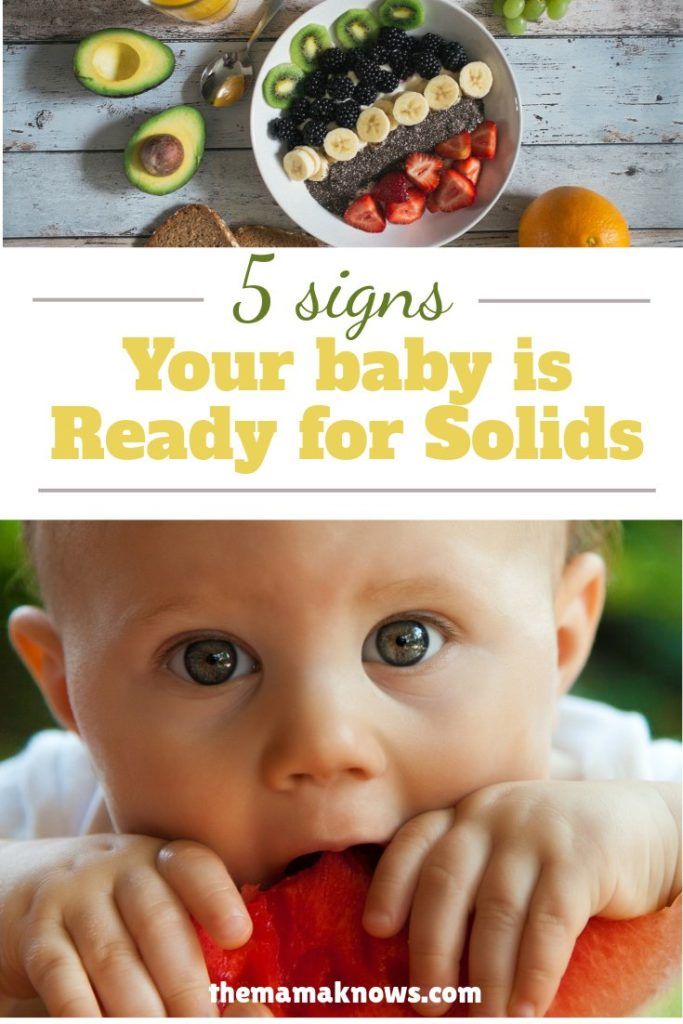 And you'll be so glad that you stuck with it and didn't give in.
And you'll be so glad that you stuck with it and didn't give in.
As you navigate through this challenging transitional period, I hope these reminders provide some much needed reassurance and peace of mind.
- Your baby’s appetite will vary from day to day.
- Their tummies are tiny so they don’t need much.
- Breastmilk/formula will continue to be the main source of nutrition during the 1st year. If your baby didn't eat much, you can offer milk about 30-45 minutes after the meal has ended (don't offer immediately after). That way they're still getting the nutrition they need, and they won't make the association of "ooh if I don't eat, mommy will give me milk!"
Gagging
Most likely, there will be a lot of gagging. This is again quite normal as your baby learns to handle new textures. It’s a safety mechanism that actually helps prevent choking and helps your baby in learning to manage food safely.
So don’t fall back on offering the safer purees. Again, gently challenge them to accept new textures and to learn to chew by offering a variety.
Again, gently challenge them to accept new textures and to learn to chew by offering a variety.
On the other hand, if the gagging persists and your baby is visibly upset then it’s best to consult with your physician to make sure there aren’t any other underlying issues, like oral motor delays, sensory sensitivity, or a medical condition, that need to be addressed.
Spitting
As babies are learning to chew and swallow, they will likely spit out food that is too large to swallow. It's also a part of learning to chew. So don't intervene. Let it be.
Role Model!
It's important to keep the mealtime environment safe and positive. Offer different textured foods without pressure and encourage your baby's curiosity with exploring the food. The best thing you can do is have your baby join the family during mealtimes as much as possible. They learn so much from simply watching what you do. The more they see everyone enjoying their food, laughing, and having a grand ole time, the more they're going to want to be a part of it.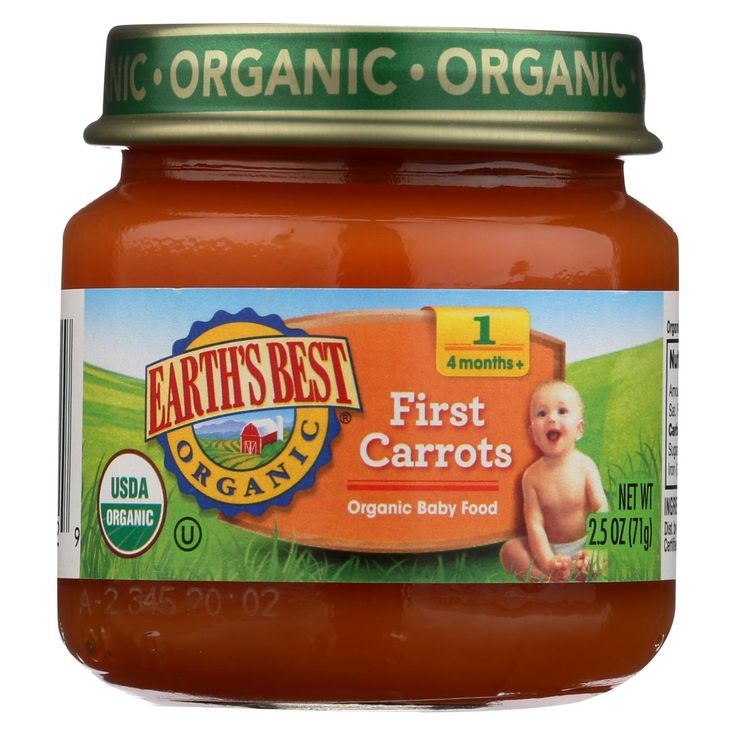
Show how you grab food with your hand and bring to your mouth. Exaggerate chewing with your mouth open. This is not the time to mind your table manners.
EACH and EVERY time your baby is exposed to new flavors and textures, they are learning and gaining confidence from it.
I want to leave you with this:
Be patient. Continue to offer a wide variety of textures (and flavors!). Trust the process! It's one bumpy ride and we need to be in it for the long-haul. And if you need a step-by-step guidance, check out my 3 month program below. It's complete with daily cooking demos, game plan, recipes, etc. to help you to move beyond purees!
Do you want to minimize picky eating and set a solid foundation for a lifetime of healthy eating habits?
Check out this 3 month mastering self-feeding program! It’s the closest thing to me being in your kitchen
When is a child ready to try thicker solids?
Your baby’s made it through cereal mush, soupy carrots and ever-so-slightly texturized chicken and squash dinners. Now it’s time for the real culinary fun to start — welcome to Stage 3 baby food!
Now it’s time for the real culinary fun to start — welcome to Stage 3 baby food!
“Once your baby has successfully eaten Stage 2 foods, which have some texture to them, they can start Stage 3,” says Dr. Melanie Custer, a pediatrician at West Bend Pediatrics, Children’s Wisconsin.
How do you know your baby is ready to make the leap from purees to slightly more sophisticated fare? Here, experts and parents weigh in on moving on to Stage 3 baby food. Time to dig in!
What is Stage 3 baby food?
Most jars of Stage 3 baby food are still pretty pureed (hence, the jars), but your little one needn’t be restricted solely to foods that are, for all intents and purposes, mush. Instead, you can steer your budding gourmand toward soft, small pieces of whatever you’re having. Think: cut-up pieces of turkey meatballs, banana chunks and small squares of tofu.
“Stage 3 baby foods are thick blended foods with chewable chunks, such as the kind you find at the grocery store, or small cut-up pieces of easily chewed table foods, which are usually referred to as ‘finger foods’,” says Dr.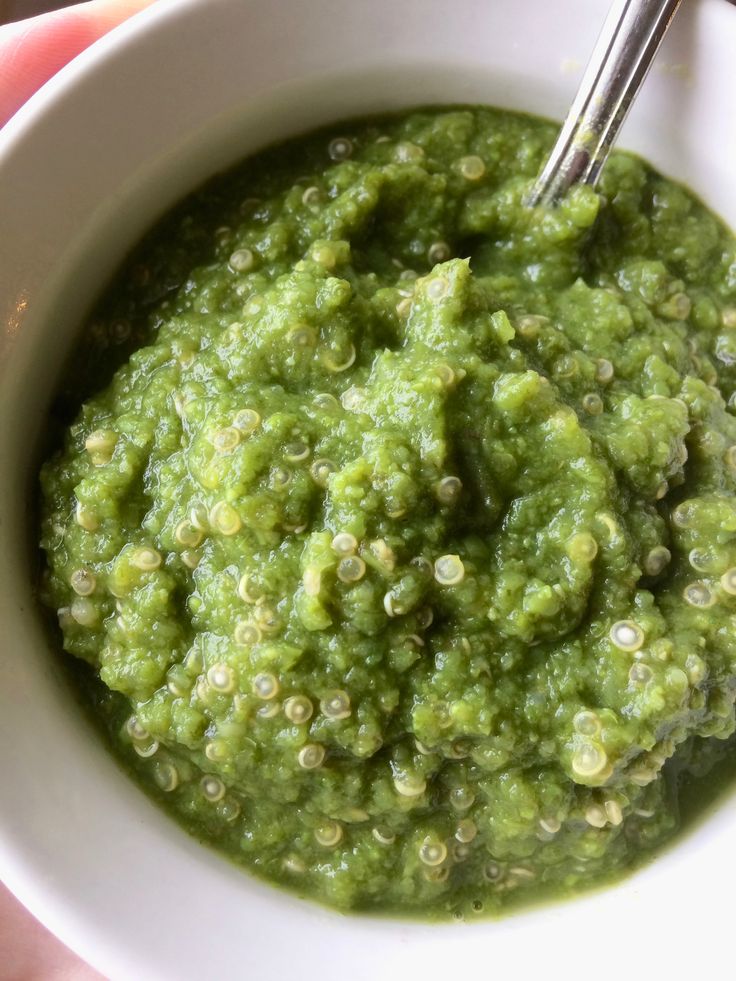 Kristen Treegoob, a pediatrician at Children’s Hospital of Philadelphia. (Avoid placing chunks of food in blends and purees, as it may cause a choking risk.)
Kristen Treegoob, a pediatrician at Children’s Hospital of Philadelphia. (Avoid placing chunks of food in blends and purees, as it may cause a choking risk.)
“Stage 3 baby foods are thick blended foods with chewable chunks, such as the kind you find at the grocery store, or small cut-up pieces of easily chewed table foods, which are usually referred to as ‘finger foods.'”
DR. KRISTEN TREEGOOB, PEDIATRICIAN
And be sure to bear in mind that every child is different and develops at their own individual pace. Check with your child’s doctor for baby food recommendations during the first year.
When to start Stage 3 baby food
“Typically, 9 months is the age babies start eating Stage 3 foods,” says Dr. Zulma Laracuente, a pediatrician in Alexandria, Louisiana. “But, generally-speaking, 9 to 12 months is considered a time of slowly transitioning your baby to table food.” (In other words, no more cooking and serving separate meals!)
Does that mean you baby is ready to tuck into a T-bone steak with a side of broccoli rabe? No.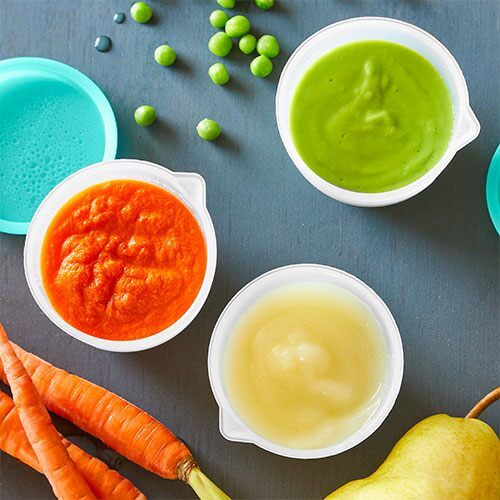 At least, not in the traditional form. But as long as food is small and very easy for baby to work through, it’s OK.
At least, not in the traditional form. But as long as food is small and very easy for baby to work through, it’s OK.
While the idea of having your 10-month-old feed themselves while you sit down to your own meal probably sounds heavenly, bear in mind, every child gets there in their own time.
“My first child couldn’t wait to eat mashed up meatballs and soft carrots on his own,” says mom of two Jennifer Reilly of New York City. “But my second? Not so much. Aside from puffs, I was still spoon-feeding him at nearly a year!”
Signs baby is ready to start Stage 3 or finger food
As your baby’s oral skills and hand-eye coordination develop, they’re moving closer to being able to feed themselves, either with their hands or a spoon. (Though, according to the Cleveland Clinic, babies usually don’t get the hang of utensils until at least 12 months.)
According to Jenifer Thompson, R.D., an advanced practice dietician at Johns Hopkins in Baltimore, babies can move past traditional baby foods and onto “pick-ups” (finger foods) as their pincer grasp skills are honed.
“By the time baby is between 8 to 12 months old, they should be able to pick up small, soft pieces of finger foods with their finger and thumb and bring them to their mouth,” she says.
Other signs your baby is ready to take meal time into their own hands? They tell you — as only a baby can.
“I knew my son was ready to try table foods when he started grabbing at the spoon every time I went to feed him,” says mom of two Darcy McConnell of Garwood, New Jersey. “Even though he didn’t actually use a fork or spoon for a few months, he loved holding on to them while he picked up his food. It was so cute!”
What Stage 3 foods to start with
Once you’ve hit the Stage 3 phase, (almost) anything goes, as long as it’s the right texture for baby. For instance, it’s OK to feed your child what the rest of the family is having for dinner, as long as you take proper precautions, such as making sure food is easy to chew and cut up into small pieces.
“Once babies are about 9 months old, they should safely be able to self-feed a variety of foods,” says Treegoob.
At this point in your baby’s life, solid food is starting to make up a significant part of their diet, so it’s important to offer foods that are nutritious. Also, exposing your child to different foods that are nourishing from an early age can help lay the groundwork for good, long-term habits.
“Parents should introduce a variety of healthy foods from different food groups with different textures by the end of the first year in order to help with healthy eating habits,” says Thompson.
“Parents should introduce a variety of healthy foods from different food groups with different textures by the end of the first year in order to help with healthy eating habits.”
jenifer thompson, advanced practice dietician
Here are a few good choices for Stage 3 foods, according to Thompson and Treegoob:
- Well-cooked vegetables of any variety.
- Ripe fruits of any variety. (Mashed or cut-up bananas work very well at this stage.
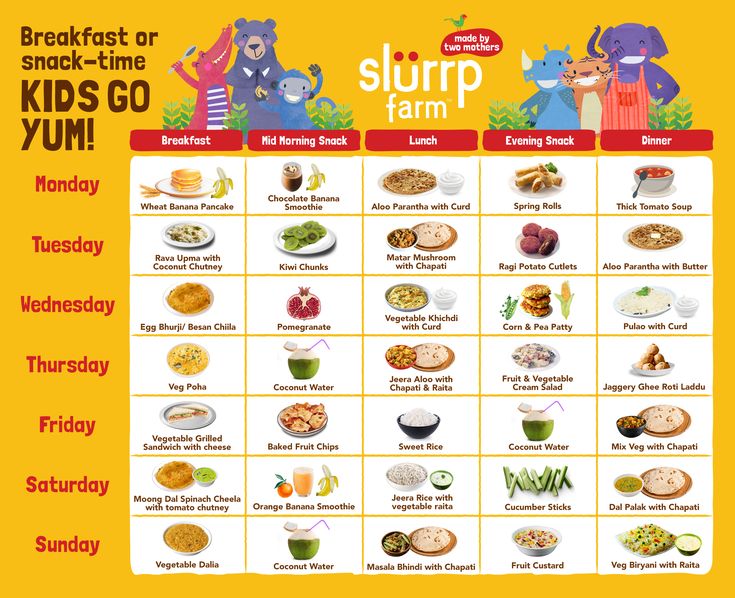 )
) - Shredded meat.
- Scrambled eggs.
- Soft cheese.
- Cooked pasta.
- Small pieces of tofu.
Which foods to avoid during Stage 3
When your baby starts eating what the rest of the family is having, by all means, rejoice over having to prepare fewer dishes. However, if you’re hitting up the drive-thru after soccer practice with your older kid, skip the Happy Meal for your baby, regardless of how you serve it.
“When it comes to feeding babies, I recommend avoiding heavily salted or sweetened foods, as well as fast food,” says Treegoob.
The reason doctors advise being mindful of baby’s salt intake? In addition to it possibly contributing to bad eating habits overall, a 2011 study published in the European Journal of Clinical Nutrition found that infants who consumed over 400 milligrams of sodium per day (the maximum UK recommendation for children up to age 12 months) were potentially at risk of “harming developing kidneys” and causing “high blood pressure in later life. ”
”
According to Treegoob, parents should also avoid any foods that may pose a choking risk to children, such as:
- Popcorn.
- Whole grapes.
- Whole peanuts.
- Raisins.
- Hot dogs.
- Hard candy.
- Seeds.
And finally, parents and caregivers should understand how long baby foods last and forgo giving a baby honey until after their 1st birthday, as it can cause a botulism infection.
How to start Stage 3 foods safely
As with Stage 1 and Stage 2 baby food, babies still should eat sitting upright with an adult nearby.
“Once an infant is ready for Stage 3 solids and is able to finger feed themselves, it’s still important to watch your baby eat, so you can help pace them and identify signs of choking early,” says Treegoob. “You can also offer them sips of formula, breast milk or a little water every few bites when they begin eating more than a few ounces at a time of Stage 3 foods to make sure they don’t eat too quickly. ”
”
“Once an infant is ready for Stage 3 solids and is able to finger feed themselves, it’s still important to watch your baby eat, so you can help pace them and identify signs of choking early.”
DR. KRISTEN TREEGOOB, PEDIATRICIAN
Also, be sure the food you’re giving your baby is prepared for their developmental stage. According to Kids Health, parents should slice food up into small pieces in addition to cooking it a little longer in order to make sure it’s very soft. (And, of course, check the temperature!)
Once your baby gets a taste of “real food,” don’t be surprised if their interest in formula or breast milk wanes.
“Between 7 to 9 months, parents may notice that their baby shows interest in smaller or less frequent bottles or breastfeeds,” says Treegoob. “As long as weight remains on track and the baby is staying hydrated, there’s no cause for concern.”
According to Treegoob, babies between 4 to 6 months old typically drink between 24 to 40 ounces of breast milk or formula per day; 24 to 32 ounces from 6 to 9 months; and by 9 to 12 months, when they’re eating more table foods, that volume can decrease to as low as 16 to 24 ounces.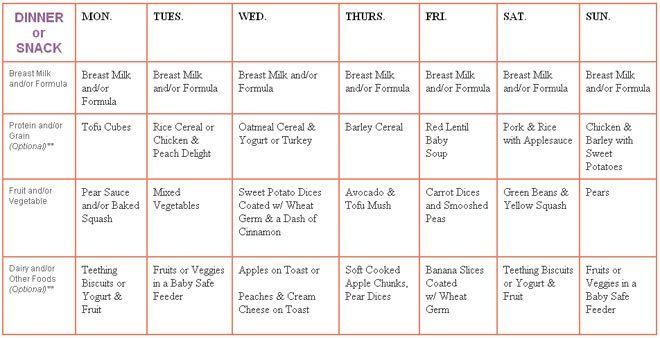
The American Academy of Pediatrics recommends giving baby between 4 to 6 ounces of breast milk or formula four times a day, along with three meals a day and two small snacks. What you give your little one is up to you — just make sure it’s healthy and texturally appropriate for their age.
what products are possible, features of complementary foods
It is no secret that young and not very experienced mothers receive information on the nutrition of an infant, including recommendations on how to introduce the first complementary foods, mainly from two sources: grandmother's stories and from the Internet. Unfortunately, both of these respected sources of information may voluntarily or not voluntarily, but be very mistaken, since grandmothers grew up in a more prosperous time in terms of environmental conditions, and the Internet is littered with various articles that are rarely written by professionals, moreover, they rely either on explicit outdated guides on baby food, or frankly on unverified information. nine0003
nine0003
In this article, I will try to combine the latest scientific data and recommendations on how to introduce the first complementary foods with many years of observations from the experience of a practical pediatrician and an allergist-immunologist.
At what age is it time to introduce the first complementary foods
According to the recommendations of the Research Institute of Nutrition of the Russian Academy of Medical Sciences, the first complementary foods can be introduced from 4.5 - 5 months, regardless of the type of feeding. This is "average". In practice, the choice of when to start introducing complementary foods still depends on the individual characteristics of the child. For example, for a child with widespread atopic dermatitis (diathesis), we will not introduce complementary foods until at least acute skin symptoms, such as cracks, weeping or secondary eczema, have steadily disappeared. Increased dryness and flaking of the skin, of course, require constant application of moisturizers to the skin, but in no case are they a contraindication to the start of the introduction of the first complementary foods. nine0003
nine0003
Another important point when choosing the time to start introducing complementary foods is the dynamics of the child's weight gain. The more intensively the child gains in height and weight, the sooner he may need additional calories, since the energy value of breast milk or artificial formula alone will most likely not be enough for a child who grows faster than his peers by 4 - 5 months. We must not forget that natural products contain a fairly large range of minerals and vitamins, and a mother’s body, alas, cannot be an eternal and bottomless source of useful nutrients, somewhere something will gradually begin to be missed. nine0003
In addition, the nature of lactation in the mother has a great influence on the timing of the introduction of complementary foods. If a nursing mother begins to feel a lack of milk, I would prefer to first give her advice on stimulating lactation, and at the same time begin to introduce complementary foods. It will be better than introducing an artificial mixture. But I repeat that the earliest start date for the introduction of the first complementary foods is the age of 4 months, before the child's body is not yet ready, the risk of developing allergies is also high.
But I repeat that the earliest start date for the introduction of the first complementary foods is the age of 4 months, before the child's body is not yet ready, the risk of developing allergies is also high.
So, we agree with you that the first complementary foods can be introduced no earlier than 4 months of a child's life.
First complementary foods: Which foods to choose?
The first complementary foods, as a rule, should consist of vegetable or fruit purees, but in no case juices. Still, juices, even for children, are highly filtered, mainly contain a large amount of organic acids and “light” carbohydrates (that is, sugar, to make it clear to everyone). I will not waste time explaining why juices are harmful to an infant, but I will describe a clinical case from practice. nine0003
Parents with an 8-month-old girl came to the reception. Somewhere from 5 months she practically did not gain weight, although before that all indicators were normal.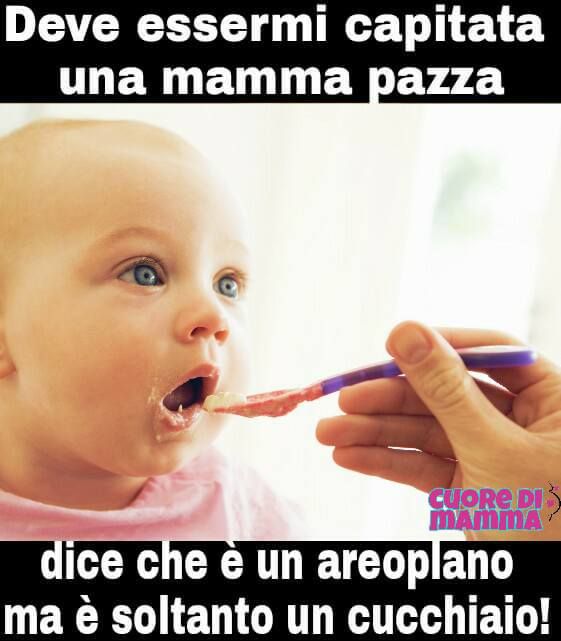 In the analyzes, apart from visible signs of iron deficiency, slightly reduced hemoglobin, no pathology was also detected. The main complaint: "does not eat anything." And when I began to find out what she still eats, it turned out that the child drinks half a liter of juice every day. But porridge or cottage cheese, or mashed potatoes cannot be forced together, they spit everything out. I don't like the taste. And so - for three months. The child, of course, became very nervous, yelling at night, demanding juice. nine0003
In the analyzes, apart from visible signs of iron deficiency, slightly reduced hemoglobin, no pathology was also detected. The main complaint: "does not eat anything." And when I began to find out what she still eats, it turned out that the child drinks half a liter of juice every day. But porridge or cottage cheese, or mashed potatoes cannot be forced together, they spit everything out. I don't like the taste. And so - for three months. The child, of course, became very nervous, yelling at night, demanding juice. nine0003
So draw your own conclusions and be careful.
For the first feeding, this is now recognized by everyone, the best dishes are vegetable purees from green varieties of vegetables: zucchini, cauliflower, broccoli. The first complementary foods are introduced, starting with half a teaspoon, in the morning for three days, then gradually increase the amount of the product to 40-50 grams per week. Supplemented with breast milk or formula.
For problems with stools, constipation, it’s good to start introducing prune puree, green apple, you can try pumpkin, even apricot puree, but in no case start with carrots. Beta-carotenoids, which are abundant in carrots, are generally poorly absorbed and can cause allergies in a child. nine0003
Second food. Porridge or meat?
Even 5 - 6 years ago, we taught students at the medical institute that from 5 - 5.5 months old, an infant should begin to give cereal porridge for complementary foods. This is rice, buckwheat, corn. The first week you can cook 5% porridge: 5 grams of ground cereal per 100 ml of water. Then the porridges are cooked already denser: 10 grams of cereal per 100 ml of water. But now, basically everyone uses instant (soluble) cereals, which are diluted with water according to the instructions on the package. In addition, ready-to-eat liquid cereals are on sale: for example, Bellakt, Frutonyanya, etc. nine0003
Why meat? You ask. According to modern recommendations (they really began to change quite often), but in this case I support: if a child has a pronounced decrease in hemoglobin in the blood below 100 g / l by the age of 5 months, it makes sense to start introducing fruit or vegetable purees as a second types of complementary foods - meat purees as a source of the most well-absorbed heme iron. You need to choose from varieties such as turkey, rabbit, lamb. Beef and veal can only be offered to children who did not have red cheeks and diathesis. nine0003
You need to choose from varieties such as turkey, rabbit, lamb. Beef and veal can only be offered to children who did not have red cheeks and diathesis. nine0003
In the absence of problems with low hemoglobin, feel free to introduce porridge as the second meal of complementary foods, especially if the child is small and does not gain weight very well. In this case, we can recommend breeding cereals with the addition of breast milk or a mixture (Nan, Nutrilon, Celia, Nanny). With mixtures based on goat's milk, parents of children with a predisposition to allergies should be very careful. Goat milk formulas are not the best choice for babies who are allergic or intolerant to cow's milk protein, whatever the internet says. Believe me, there are serious scientific articles by foreign authors, which provided data on a very high frequency of cross-allergy between cow and goat milk proteins in children who were transferred to goat milk mixtures. And I saw it myself in my practice, when a child with dermatitis was transferred to a mixture of goat's milk, there was a clear improvement for a month or two, and then all over again and with a doubled degree of allergic skin damage.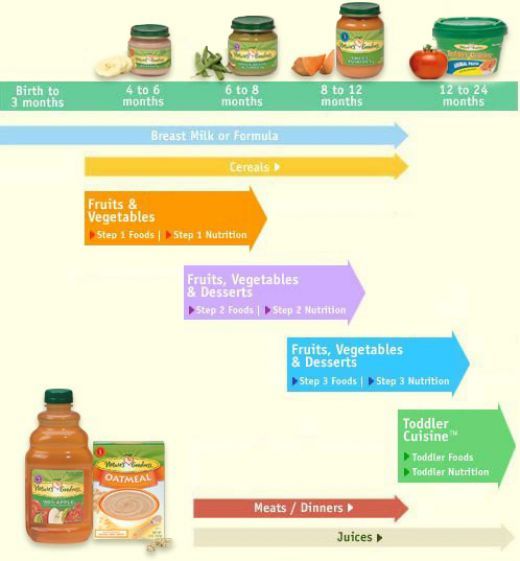 nine0003
nine0003
Introduction to fermented milk products
This is the most difficult question. I am sure that most of our grandparents demand that their stupid parents start drinking milk and kefir as soon as possible. In a number of cases, children really start to absorb sour-milk products quite well after 6 months, but before this age I am very careful even with sour-milk Agusha, and even introducing milk or kefir before 6 months is a bad form, believe me, and can lead to very bad consequences for the child. I understand the Western European medical community, which has recently banned its pediatricians from recommending fermented milk products for complementary foods for children under 3 years of age, just imagine! nine0003
They (the Europeans) need to do something with their artificial milk mixtures. Even 20 years ago, we did not know other mixtures after the "two", that is, the second formula for children from 6 to 12 months. Then there were formulas for children from 1 to 2 years old, then from 2 to 3 years old, and now there are already mixtures for children up to 4 years old, and I think if this goes on, then until the age of sixteen there will be their own milk substitutes. Dismiss me, I don't think this approach is correct. But the fact is that our grandparents had much better genetics than the generation of our children, alas. In the context of the growth of medical capabilities, genetically determined diseases are also growing, and in this case, intolerance to cow's milk protein, and with every 10 years there are more and more such people among us. But if a child really suffers from an allergy to cow's milk protein or is severely deficient in enzymes, then he will carry this peculiarity through his whole life, and most likely he will not drink milk or kefir himself, and there is no need to force him if he himself won't want to! nine0003
Dismiss me, I don't think this approach is correct. But the fact is that our grandparents had much better genetics than the generation of our children, alas. In the context of the growth of medical capabilities, genetically determined diseases are also growing, and in this case, intolerance to cow's milk protein, and with every 10 years there are more and more such people among us. But if a child really suffers from an allergy to cow's milk protein or is severely deficient in enzymes, then he will carry this peculiarity through his whole life, and most likely he will not drink milk or kefir himself, and there is no need to force him if he himself won't want to! nine0003
But you are lucky with genetics, and no one in the family has ever had an allergy (which is hard to imagine nowadays), and most importantly, if your child has always had perfectly clean skin, then the first of the dairy products - cottage cheese, you will begin to offer your child with 7 months, kefir - from 10 months. Milk - after a year. It will be better this way.
Milk - after a year. It will be better this way.
But if your family does not have a very close and joyful relationship with milk, then it is better to postpone even the introduction of kefir and yogurt into complementary foods for a child until the age of 18 months. nine0003
Fish day and first meal
Fish is a very healthy product, rich in vitamins and antioxidants, but it must also be introduced carefully. I advise you to start introducing the first fish food at about 7-8 months. It is better to start with species such as cod, hake, haddock. The rules are the same: the first three days on the "gram," then slowly add. If there are no problems in a week or two, you can try such delicacies as tuna or salmon, of course, canned children, if you can find it. It is better not to mess with trout and salmon in the first year of life, this fish is all stuffed with dyes and antibiotics. nine0003
No matter how hard I tried, the article about the first complementary foods turned out to be long. Thank you for reading to the end, I hope it will be useful. If you have questions about the introduction of complementary foods, you can write your appeals on our website in the question to a specialist section. A short answer can be obtained on the Internet, but in order to make a diagnosis and give a detailed consultation, of course, you need to come to a face-to-face appointment with a pediatrician and a pediatric allergist.
Thank you for reading to the end, I hope it will be useful. If you have questions about the introduction of complementary foods, you can write your appeals on our website in the question to a specialist section. A short answer can be obtained on the Internet, but in order to make a diagnosis and give a detailed consultation, of course, you need to come to a face-to-face appointment with a pediatrician and a pediatric allergist.
Page not found
How to become an honorary blood donor
The neural network draws anime: how to process photos using Different Dimension Me
The thermometer crashed, what should I do?
How I was deceived by 15,000 ₽ with Avito-Deliveka
COMPARE
cm. All
9000 9000
investments for beginners
Financial cushion
benefits from the state
How to rent an apartment
How to extinguish a loan
DIALITIONS IS
Investments for beginners
9000 9000 9005How to rent an apartment
How to repay a loan
See all
How to use a neural network to generate Midjourney drawings: correctly compose a query
How to exchange rights
How to get the Green Card of the United States
9000
9056 9000 9000 9000 9000 9000 such a credit history
How to choose the right condom: detailed instructions0055
How to register a car in the traffic police
A new unified benefit for children under 17 years old from 2023: Basic conditions
10 belongings, which are 10 belongings, which are, which can be done by a fraudster who took possession of your passport data
How I ordered a car from Japan0201 14.11.22
The best for half a year
cm. All
How to get the US Green Card
The neural network draws anime: how to process photos using Different Dimension Me
900 .22
10 things that a scammer can do if he gets your passport details
9018
How to exchange rights
Is it possible to leave Russia after a partial mobilization announcement
9000 9000
A new unified manual for children to 17 years old from 2023 from 2023 from 2023 from 2023 from 2023 from 2023 from 2023 from 2023 from 2023 from 2023 from 2023 from 2023 from 2023 from 2023 from 2023 from 2023 from 2023 from 2023 from 2023 years: basic conditions
What is hypothyroidism and how I live with it for 3 years
What is credit history
The thermometer broke, what should I do?
How to register a car in the traffic police
How to become an Honorary Donor of blood
9000 9000
Part mobilization in Russia: how will it be underway, who will go through, who will go through, who will go through. they won’t call
How I was deceived for 15,000 ₽ with Avito-delivery
0055
How to calculate maternity payments
How I ordered a car from Japan
9000
How to choose a detailed instruction 900.16
Courses will help
cm. All
landscape house
Win burnout
9000 9000
054 Select the apartment
Improve life using Excel
Earn on shares
9000 90.12.10.1
Understand charity
Travel safely
Earn on a credit card 12.9055 20050058
Do not lose with a mortgage
Protect from scammers
Do not go broke to health
9005.12.12.20 9005Carrying car
